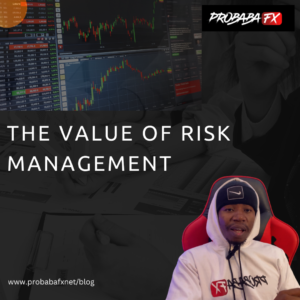Many traders employ the approach of trading seasonal patterns to profit from recurrent trends in the financial markets. Seasonal patterns are periodic price changes and trends in different currency pairings that take place at particular periods of the year.
They are a result of a variety of market-influencing variables, including the weather, holidays, and other occurrences. If recognized and used properly, these patterns can provide forex traders with special chances to earn money and assist them in selecting the best time to purchase or sell assets.
This post will go through seasonal patterns, including what they are, how to spot them, how to trade them successfully, and what you can do to increase your earnings.
Seasonal patterns: what are they?
Seasonal patterns in currency pairings are recurring price changes or trends that frequently take place during specific times of the year. Numerous variables, such as seasons, economic cycles, and even human conduct, can have an impact on them. Although no two years are exactly the same, historical data frequently indicates recurring tendencies that traders may use to make wise selections.
The following are some typical instances of seasonal trends in forex:
Holiday Effects: Around significant holidays, currencies may behave differently. For instance, due to decreased trading volumes around Thanksgiving and Christmas, the U.S. dollar may see greater volatility.
Economic Seasons: Seasonal trends are frequently seen in the publication of economic data and interest rate decisions. These may alter the value of currencies and create trading opportunities.
Weather-Related Trends: Some currencies are affected by weather-related factors, such as agricultural commodity currencies like the Australian dollar, which are prone to seasonal weather conditions.
Market Sentiment: As traders adjust their trading strategies to the changing seasons, psychological factors like risk appetite and investor sentiment can also influence seasonal patterns.
Understanding seasonal patterns
Finding seasonal trends to trade is the first step. You may identify seasonal patterns in the forex markets by following these simple steps:
Start by looking at the price history of the currency pairs you want to trade. During particular seasons of the year, keep an eye out for reoccurring patterns and trends.
2. Calendar of economic events
Pay special attention to the economic calendar, which lists important data releases, central bank pronouncements, and economic events. Economic cycles are connected to a number of seasonal factors.
Examine underlying variables that may influence seasonal trends, such as agricultural cycles for currencies tied to commodities or holiday spending for currencies driven by consumers.
Observe the mood of the market using news and social media. Seasonal events and varying moods may have an impact on trading behavior.
5. Consult Experts and Research:
Access research studies, business news, and professional analyses that could point up current or projected seasonal tendencies.
Strategies for Trading Seasonal Patterns
The next stage is to create a trading strategy to take advantage of the seasonal pattern after you’ve found it.
The following are some successful methods for trading seasonal patterns:
Making a trading plan is the next step after identifying seasonal trends. Your access and exit points, as well as your risk management approach, should be described in this plan. When prices hit a specific level, for instance, you can opt to place a trade. You might then elect to withdraw the transaction when prices reach a specified profit goal or stop-loss level.
In this approach, an asset that normally performs well during a certain season is purchased and held until the pattern historically changes. An investor may, for instance, buy agricultural commodity futures in expectation of a good crop.
Currency pairs trading inside a range may occasionally occur as a result of seasonal tendencies. Finding support and resistance levels and exploiting price variations inside this range are key components of range trading methods.
4. Trading on the economic calendar:
Align your trading activity with seasonal and economic events. For instance, if central banks have a history of raising interest rates during a certain season, traders should be ready for prospective rate increases.
Options provide traders with flexibility when trading seasonal movements. Options allow you to design trading strategies that profit from both positive and negative price swings. For seasonal bullish patterns, purchasing call options can make sense, but buying put options might make sense for seasonal bearish patterns.
To capitalize on seasonal trends, some traders use trend-following tactics. They locate the historical beginning and ending points of seasonal trends and place bets in the trend’s direction. Consider using a trend-following method, for instance, if historical data shows that a particular currency tends to increase during a given season. Technical indicators, trendlines, and moving averages may all be used to help identify entry and exit locations.
7. Utilize technical analysis.
Trading professionals frequently utilize technical analysis to spot trends and probable entry and exit points. You may better comprehend market patterns and make more intelligent trading decisions by using technical indicators like moving averages, trend lines, and momentum indicators.
Risk management is crucial when trading seasonal trends, as it is with any trading technique. To safeguard your financial resources and effectively manage risk, adopt the correct position size, stop-loss orders, and risk ceilings. Additionally, it’s critical to follow your trading plan and refrain from overtrading.
To distribute risk among a variety of assets and lessen the impact of unforeseen market fluctuations, diversify your portfolio.
Seasonal patterns may change or evolve over time as a result of varying economic situations, altered regulations, or other causes. Watch your selected seasonal trends carefully and adjust your plan as necessary.
Keep abreast of market developments and current affairs that may have an influence on seasonal trends. Since economic conditions are subject to change, it is critical to adjust your tactics as necessary.
Examples of Seasonal Patterns in Forex Trading in Real Life
Let’s look at a few actual instances of seasonal trading trends in forex:
The American dollar regularly enjoys a “Santa Claus Rally” in the latter weeks of December. The value of the dollar relative to other currencies is on the rise, which is what defines this phenomenon. Traders attribute this tendency to higher Christmas season consumer spending and an upbeat market mood.
During the months of July and August, many forex traders noticed a “summer slump” in trading volume. Lower liquidity during this time might cause choppy price swings. During this time, traders frequently modify their methods to take into account the lower volatility.
Agribusiness cycles have an impact on commodity currencies like the Canadian dollar (CAD) and the Australian dollar (AUD). During the Australian wheat harvest, for instance, the AUD tends to increase, while the Canadian agricultural cycle may have an effect on the CAD.
4. Determining Interest Rates:
When deciding on interest rates, central banks frequently adhere to seasonal trends. For instance, to fight inflation or promote economic development, the U.S. Federal Reserve may raise rates more often throughout specific economic seasons.
Disclaimer: Trading forex involves risk, and it’s important to conduct thorough research, seek professional advice, and trade responsibly. Past performance is not indicative of future results.
Trading seasonal trends may be a successful technique for traders who are prepared to invest the time and effort necessary to thoroughly research the market and create a sound trading strategy. It takes a careful examination of historical data, economic calendars, and market sentiment to spot seasonal trends. You’ll be able to optimize your revenues and improve your chances of success by following the instructions in this article.
#probabafx #forextrading




